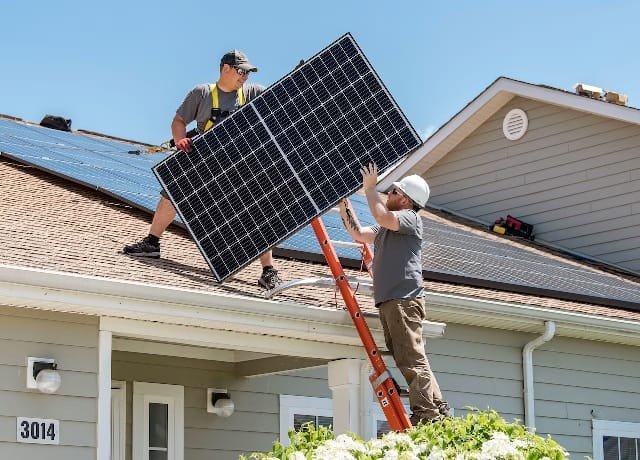The increasing awareness of the effects of climate change has warranted interest in the implementation of carbon-pollution-free energy (CFE). This type of energy comes from renewable resources like wind, solar power, and hydropower, which do not emit carbon during generation. The introduction of CFE is a vital process that can help to lessen the effect of climate change and greenhouse emissions. This paper aims to discuss how carbon-pollution-free energy can be helpful in fighting climate change as well as the use of energy attribute certificates in the process of energy transition.
Reducing Greenhouse Gas Emissions
Reducing greenhouse gas emissions is one of the primary advantages of carbon-pollution-free energy because this kind of energy is environmentally safe. He noted that the burning of traditional energy, such as coal and natural gas, releases significant amounts of carbon dioxide and other pollutants. These emissions are the key factors responsible for global warming and climate change.
Impact of CFE:
- Zero Emissions: Wind, solar power, and hydroelectric power systems all provide CFE and produce electricity without emitting carbon dioxide. With the use of these clean energy sources, there is a possibility of reducing emissions from fossil fuels significantly.
- Sustainable Energy Supply: CFE sources are recurrent and non-replenishable since they are not measured in physical units of stock; however, the sources are renewable. While conventional energy resources are non-renewable resources that are gradually depleted as more is used, renewable resources are endless resources that can provide a constant supply of energy.
Promoting Energy Independence and Security
Energy transition to sources that do not produce carbon pollution can also increase energy independence and security. Most countries are dependent on the importation of fossil fuels, which are not only prone to unpredictable prices but also fraught with geopolitical risks.
Benefits of CFE:
- Local Energy Production: This is because when countries are able to invest in renewable energy infrastructure, they can generate energy at home. This makes the country only partially rely on foreign energy sources, hence improving the security of the nation.
- Economic Stability: Unlike fossil fuels, CFE sources do not have the same volatility as a form of energy. This stability also means more certain energy costs for consumers and businesses.
Enhancing Public Health
Besides causing climate change, the emission of greenhouse gases due to the combustion of fossil fuels affects the population’s health. Sulfur dioxide, nitrogen oxides, and particulate matter that result from the burning of coal, oil, and natural gas lead to respiratory and cardiovascular illnesses such as emphysema and bronchitis.
Health Benefits of CFE:
- Improved Air Quality: This is so because CFE does not involve the burning of fossil fuels, which releases other pollutants such as SO2, NOx, and particulate matter in large quantities.
- Reduced Healthcare Costs: This has repercussions on general health since better quality air reduces incidences of ailment and thus decreases the pressure on the health facilities.
Energy Attribute Certificates (EACs)
Energy attribute certificates (EACs) are a key part of the process of moving toward low—or no-carbon-emitting energy. They are financial instruments used to conduct markets and ensure one MWh of electricity is produced from REs.
Role of EACs:
- Tracking Renewable Energy: EACs are a mechanism for recording and confirming the generation of RE. This ensures that the claims of Companies and consumers in the use of renewable energy resources are authentic.
- Incentivizing Clean Energy Investments: Through the acquisition of EACs, consumers and commercial entities can fund the deployment of RE projects. Such financial support helps to stimulate more significant investments in the clean energy infrastructure.
Accelerating the Transition to CFE
Using carbon pollution free energy can be only achieved through concerted action at different levels ranging from the governmental to the individual level.
Strategies to Accelerate Transition:
- Government Policies: Governments can encourage people to go green by offering them incentives, which include tax credits and subsidies, and by setting renewable energy standards.
- Corporate Initiatives: Companies can pledge to purchase electricity from renewable resources and adopt energy-saving technologies and practices.
- Consumer Choices: People can also decide to minimize their impact on the climate by finding out if there are green energy plans in their region and supporting those companies.
Conclusion
Fossil fuel-free energy is the key to reversing the effects of climate change. With the help of the outlined actions, such as the drastic decrease in greenhouse gas emissions, increasing energy independence, improving the population’s health, and utilizing energy attribute certificates, CFE can ensure that people have access to a sustainable and reliable energy supply. There are various levels of engagement by governments, businesses, and individuals that contribute to the decarbonization process. Carbon-pollution-free energy is not only a spiritual need but also a realistic model for a healthier and safer future.
